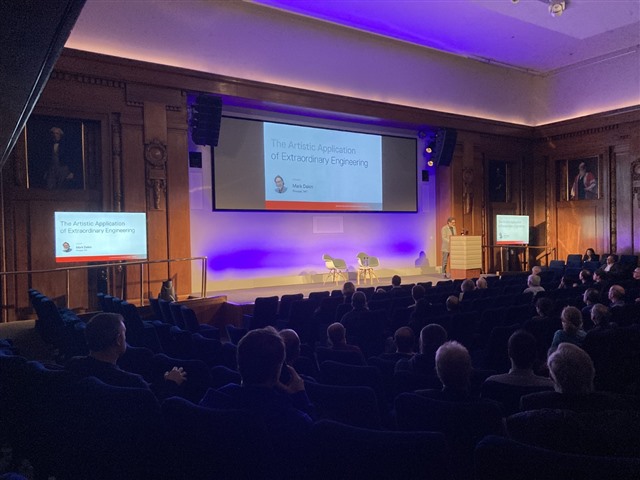The Artistic Application of Extraordinary Engineering (IET Central London Christmas Lecture)
"To understand your present, you must understand the past" explained Mark Dakin, Principal of TAIT, at IET Savoy Place, hosted by the IET Central London Network at their Christmas 2023 evening lecture.
The evening was introduced and had opening remarks from Mamta Singhal MBE BEng MSc MBA CEng FIET and IET Trustee.

His talk covered how from the Greeks to the modern day, all eras utilised technology in theatre productions. He presented a chronological order (1958 to 2020) of how different technologies were used by the most popular musicians of the day and how mega events fueled the need for technology innovations, whether that be from the technical milestones of 1958 that used electronic lighting dimming technology to the 1980's introduced scene automation using hydraulics in stage automation.
The dramatic stage-mega shows only deliver because of timed delivery, and this is down solely to good engineering. The mesmerising moments only occur because of the value of engineers and technicians and their ability to push the boundaries of stage innovation to deliver a performance on budget and within time scales.
This balance of engineering and performance is well-known as ‘tradeoff’, that is seen across all engineering disciplines. With stage technologies, or live performances, the added challenge comes from the 'non negotiables' in production that are introduced by health and safety. He spoke about how legislation for compliance and safety was introduced to generate high performance - and through this, artists were still allowed to dream and work alongside engineers as part of the creative process. These legislations meant as the industry moved forward, a balance of competency and skill was required in equal measure. Trying to balance formal will informal - nuts and bolts of realism with art - for example, with the introduction of BS EN 17206:2020, the entire production team needs to know the standard and implications for implementation - without side tracking and compromising the vision - all this within budget and schedule as part of ‘system and structure’ axis.

The artistic vision is hard to quantify but essential for technicians to engineers and so all this leads to innovation in a high trust environment. ‘The threshold of trust’ helps the pathways for skills development thus leading to high performance environment creating the deployment of the artistic vision. Simply because, the discrimination of skills sets that allow high low inclusive creativity that leading to the balance against the 'threshold of trust'. This helps balance the bureaucracy and using permissions management help reduce risk and increase performance, again, simply because are allowed to be safely creative!! At which point when the scientists and artists combine with safe creative artistic endeavour and keep the motivation of ‘what got you here won’t get your there ‘.

He spoke about how collaborating with technical ideas early helps deliver a great show because upstream and downstream technologies can be developed and embedded without compromise as it considered the implications of standards from the inset.
Mark ended the talk by asking, who says the highest technical standards and creative environment can’t merge?
This was a very insightful talk that spoke about not only the technologies involved in stage production, but also the entire ecosystem required to bring a show together.
Watch 'The Artistic Application of Extraordinary Engineering' on the IET.tv portal.